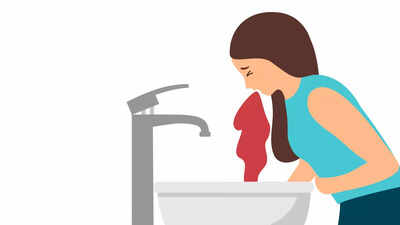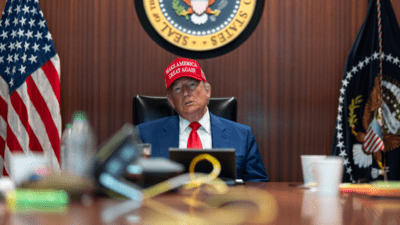What is next for Iran’s nuclear programme?

After its recent airstrikes against Iran’s facilities in Fordo, Natanz, and Isfahan, the U.S. has been claiming it has set back the Islamic Republic’s nuclear weapons ambitions by decades and nullified the country’s ability to make a nuclear weapon of mass destruction (WMD).
The question of whether Iran actually has nuclear weapons is important because of the U.S.’s history of attempts to force regime changes in foreign countries on the pretext of threats they pose, including with WMDs. Iran currently doesn’t have a nuclear weapon — but that may not be the only important question.

Doubts remain in the global arms control community over whether US bombs — including the “bunker buster” massive ordinance penetrators (MOPs) designed to destroy subsurface structures — were able to damage subterranean enrichment facilities at Natanz and Fordo and Iran’s stockpile of 60% enriched uranium.

The latter is of particular interest. Its existence, which the International Atomic Energy Agency (IAEA) estimated amounted to 400 kg in May, allows Iran to enrich it further to weapons-grade uranium in a matter of days, reducing the ‘breakout’ time within which it can be ready with a nuclear warhead.
Using high-resolution satellite data provided by private operators like Maxar, experts have spotted trucks moving in and out of the Fordo facility in the days leading up to the bombing. They have interpreted this to mean Tehran may have anticipated the bombs, including the use of MOPs, and moved fissile material and equipment away to safer locales.
Indeed, Financial Times reported on June 26 that “preliminary intelligence assessments” shared with European governments suggest Iran’s 60% enriched stockpile survived the US strikes “largely intact” and that it wasn’t “concentrated” in Fordo when the bombs fell.
In posts on X.com, Jeffrey Lewis, director of the East Asia Nonproliferation Program at the James Martin Center for Nonproliferation Studies in California, among others also discussed satellite images showing signs of special tunnels where Iran may have moved its enriched stockpile for safekeeping.
Thus, questions linger about the extent to which the American and Israeli bombing set Iran’s nuclear weapons programme back.
While estimates of the damage wrought by American bombs vary, that the Iranian nuclear programme was set back at all isn’t in dispute. But as Carnegie Nuclear Policy Program co-director James Acton has contended, this is separate from the question of whether Iran can build a nuclear weapon now. It can if it has access to the 60% enriched stockpile, other enrichment facilities the world doesn’t know about (the IAEA has deemed this likely), and/or the ability to operationalise new enrichment centres.
If the 60% enriched stockpile persists, the nuclear option also persists. In fact Israel’s actions and statements in the last month and US involvement in its war are expected to galvanise local support for the nuclear weapons programme and strengthen Tehran’s resolve.
With regards to the risk of proliferation as well as what former Indian Ambassador Mahesh Sachdev has called the “geopolitical entropy” slowly unfolding in West Asia, an equal question is whether Iran has the intention to develop nuclear weapons.
As things stand, Iran has amassed both the technical knowhow and the materials required to make a nuclear weapon. Second, the Israelis and the Americans have failed to deprive Iran of these resources in their latest salvo.
In fact the airstrikes against Iran from June 13 cast Tehran as the victim of foreign aggression and increased the premium on its option to withdraw from the Non-Proliferation Treaty (NPT) without significant international censure. Iran’s parliament has also passed a resolution to suspend its cooperation with the IAEA after having accused the agency of leaking sensitive information to facilitate Israel’s targeted strikes.
The international community is already wary of the possibility of a proliferation cascade in the region. It is an openly acknowledged fact that Israel possesses nuclear weapons. It isn’t party to the NPT either. Saudi Arabia has said it will pursue a weapon of its own if Iran has one, as might Turkey. Former US State Department members Mark Goodman and Mark Fitzpatrick have written that this situation is reminiscent of that in the Korean Peninsula, where North Korea’s withdrawal from the NPT in 2003 forced South Korea and Japan to reconsider their own options.
In the right conditions, highly enriched uranium (HEU) can retain its quality for several decades. Modern equipment stores uranium in inert cladding and sealed containers devoid of any moisture, with periodic surveillance and maintenance to keep the cores within their original specifications. Even the decay heat of HEU is only around 1 mW/kg, entailing virtually no thermal or radiation damage to the surrounding components.
While Tehran’s refusal to cooperate with the IAEA is suggestive, it hasn’t explicitly articulated that it will pursue nuclear weapons. In fact, since the 1960s until the US unilaterally pulled out of the Iran nuclear deal in 2018, Tehran has maintained its right to the peaceful use of nuclear energy alone. But the presence of large quantities of HEU in the stockpile is intriguing.
From a purely technical standpoint, the HEU can still be diverted for non-military applications. For example it can be used in a pilot enrichment cascade to study and develop nuclear reactors for naval use. At 60% enrichment, the same fissile inventory will also fit in a third of the total mass, requiring fewer cylinders to store and transport. But these are niche use-cases.
Energy- and cost-wise, enriching uranium to 60% and then down-blending it to low-enriched uranium (LEU) required to run nuclear power plants is irrational. A 60% stockpile can be blended on demand to 19.75%, 5% or 3% uranium without spinning centrifuges — but it can also be achieved by blending 20% uranium with natural or depleted feed, so there is no real advantage. Likewise, down-conversion and routine safeguards can handle large volumes easily, precluding a need to reduce the number of containers.
If anything, the HEU stockpile, the technical knowhow in the country, the absence of a nuclear warhead per se, and the sympathy created by the bombing allow Tehran a perfect bargaining chip: to simultaneously be in a state of pre-breakout readiness while being able to claim in earnest that it is interested in nuclear energy for peace. What this Schrodinger’s cat will look like when the box is opened is perhaps the next question.
Published – June 27, 2025 10:50 pm IST






